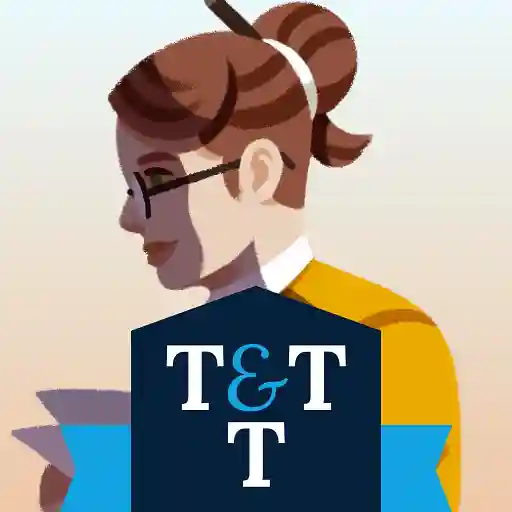Plotting with the Three-Act Structure (Novel Sprint Prep)
15:00 EST - Oct 14, 2025
In this Reedsy Live session, Reedsy’s own Martin Cavannagh takes you through a detailed breakdown of how the Three-Act Structure can help you map out your novel. Whether you're planning your next big project or just refining your plot, understanding this classic structure will provide the roadmap to writing a compelling narrative.
This post offers practical advice to help you organize your story from beginning to end — perfect if you’re gearing up for Reedsy’s Novel Sprint this November. Here’s your guide to the Three-Act Structure, complete with timestamps to follow along with Martin’s insights.
As a bonus, download the slide deck for this webinar right here.
The Origins of the Three-Act Structure (05:20)
Everything starts with the classics. The Three-Act Structure has its roots in ancient Greek theater, with Aristotle observing that stories have a beginning, middle, and end — and, crucially, that they unfold through causality: one event triggers the next. Think of structure as a natural expression of how we process information and pass it on. Rather than following a strict formula, it’s more about leveraging how cause and effect lead a reader from problem to struggle to resolution.
💡Takeaway: Understanding causality (what causes one thing to lead to another) is key in structuring your story. It’s about making each event feel like a natural progression from the one before.
Building the Setup: Act One (08:12)
Act One is all about setting the stage and grounding us in the story’s world. This is where we meet our protagonist and understand what they want. The key here is to establish their flaw or desire, the thing that will drive them through the rest of the story. Martin uses the Academy Award-winning Rocky to show us how this works: the film opens with Rocky as a small-time boxer with big dreams but little respect. His goal is to prove himself, but he's stuck in a life of mediocrity.
Then comes the inciting incident — the moment that pushes the character into the main conflict. In Rocky, this is when Apollo Creed offers him a shot at the title. At this point, Rocky has to decide: will he take the opportunity, knowing that he’s not ready, or will he let it slip away?
💡Takeaway: Your protagonist needs a clear desire to drive the plot. This is the thing they are chasing, and their journey through Act One sets them up for the challenges they’ll face in Act Two.
The Turning Point: Act Two (13:05)
Act Two is where the momentum truly builds. It’s filled with rising action, obstacles, and partial wins that push your protagonist toward their goal. The midpoint typically knocks them back, forcing them to reassess their approach and set a new course for the end.
Now, when Rocky starts training for his title shot, he doesn’t have access to a proper gym. Instead, he improvises with beef carcasses as heavy bags and long street runs. He also has to navigate tricky relationships, particularly with Paulie (the brother of the love interest), and is wary of Mickey, his trainer.
As the midpoint hits, the poster for the fight features Rocky in the wrong trunks — a humiliating reminder that he's expected to lose. This dents his confidence just before the big fight. And by the time he confesses to Adrian that he “can’t win”, he reframes his goal to simply go the distance: survive all 15 rounds to prove he’s somebody, not a nobody.
💡Takeaway: Keep cause-and-effect tight so each scene either complicates the pursuit or deepens the stakes. Rising action should feel like a steady climb, not a flat line.
The Climax and Resolution: Act Three (18:16)
In Act Three, everything culminates in the final test and emotional payoff. The climax should feel inevitable in hindsight yet uncertain in the moment; a fine balance to achieve. This is essentially the “moment of truth” for your protagonist, and the resolution follows quickly to release tension and underscore the themes.
This basic structure forms the backbone of all stories. We even see this in The Wizard of Oz, where Dorothy starts with the belief that she wants to escape Kansas (Act I), struggles through her journey in Oz (Act II), and realizes that what she truly needs was always home (Act III).
Meanwhile, in Rocky, the pre-climax builds this tension as Creed shows off in his red-white-and-blue trunks. Rocky floors him in Round 1, and they enter into a brutal, seesaw battle that pits skill against sheer heart. Finally, the climax sees the bell ring with both fighters still standing. While Rocky doesn’t win the title, he does achieve his personal victory, what he truly needed — self-respect. The denouement then follows with Adrian fighting through the crowd to reach him. They embrace, confess their love, and the film closes on a note of pride, love, and self-respect over the material trophy.
💡Takeaway: Let the ending crystallize the theme (want vs. need), then clear the stage quickly. Readers feel the emotional high more strongly when the release is clean.
The “Therefore, But” Technique for Plotting (35:32)
The therefore/but technique replaces the common “and then” structure to create a more causal, momentum-driven progression. This is an effective way to prevent your story from meandering too much and keep things moving forward. In Rocky, the chain of events might go like this:
He gets the title shot, therefore he must train, but he has no resources, therefore he improvises with punching beef and long runs.
By swapping “and then” for “therefore” and “but,” you tie each plot point to the previous one, ensuring that our story progresses logically.
💡Takeaway: If you can’t connect two beats with a “therefore” or a “but,” you may have a pacing or logic gap worth fixing.
Pacing Your Story: How Long Should Each Act Be? (22:36)
Note that the Three-Act Structure doesn’t require all acts to be equal in length. Act Two, in particular, tends to be the longest, since it’s where most of the action, tension, and character growth take place. Act Three typically wraps up more quickly once the core question of the story is answered. The important thing is the directional movement and sustained attention – not equal time for each act.
Act I can be fairly quick, just setting up the world and character’s desire. Act II, the “meat” of the story, is where the conflict deepens and stakes rise. Act III, meanwhile, often resolves the tension in a swift, satisfying way once the outcome is clear.
Think of it like this: structure is like baking, and while you might use the same basic ingredients (the three acts), each story flavors it with its unique voice, genre, and specifics!
💡Takeaway: Pace by function, not symmetry. Set up quickly, escalate deliberately, and land cleanly to keep readers engaged.
Experimentation and Flexibility (28:30)
Once you’ve mastered the basic Three-Act Structure, it becomes one of the most versatile tools in your writing arsenal. While readers tend to lean on familiar rhythms, you (as the author) can go ahead and experiment with non-linear timelines or layered structures, as long as you guide them through it clearly.
To better understand this, compare the flexibility of story structure to car and pop-song architecture: many stories share a similar framework (wheels and steering; verse and chorus), but what makes each unique is how you drive it. Cloud Atlas by David Mitchell is another great example — the novel trains readers to expect nested, time-skipping stories, then brings everything together smoothly by walking them back through each thread. Mitchell’s mastery of structure demonstrates how you can use different approaches while still keeping readers engaged and aware of the journey.
💡Takeaway: Once you’ve nailed core beats and causality, feel free to bend the frame — just ensure that readers always know how to follow the story you're telling.





